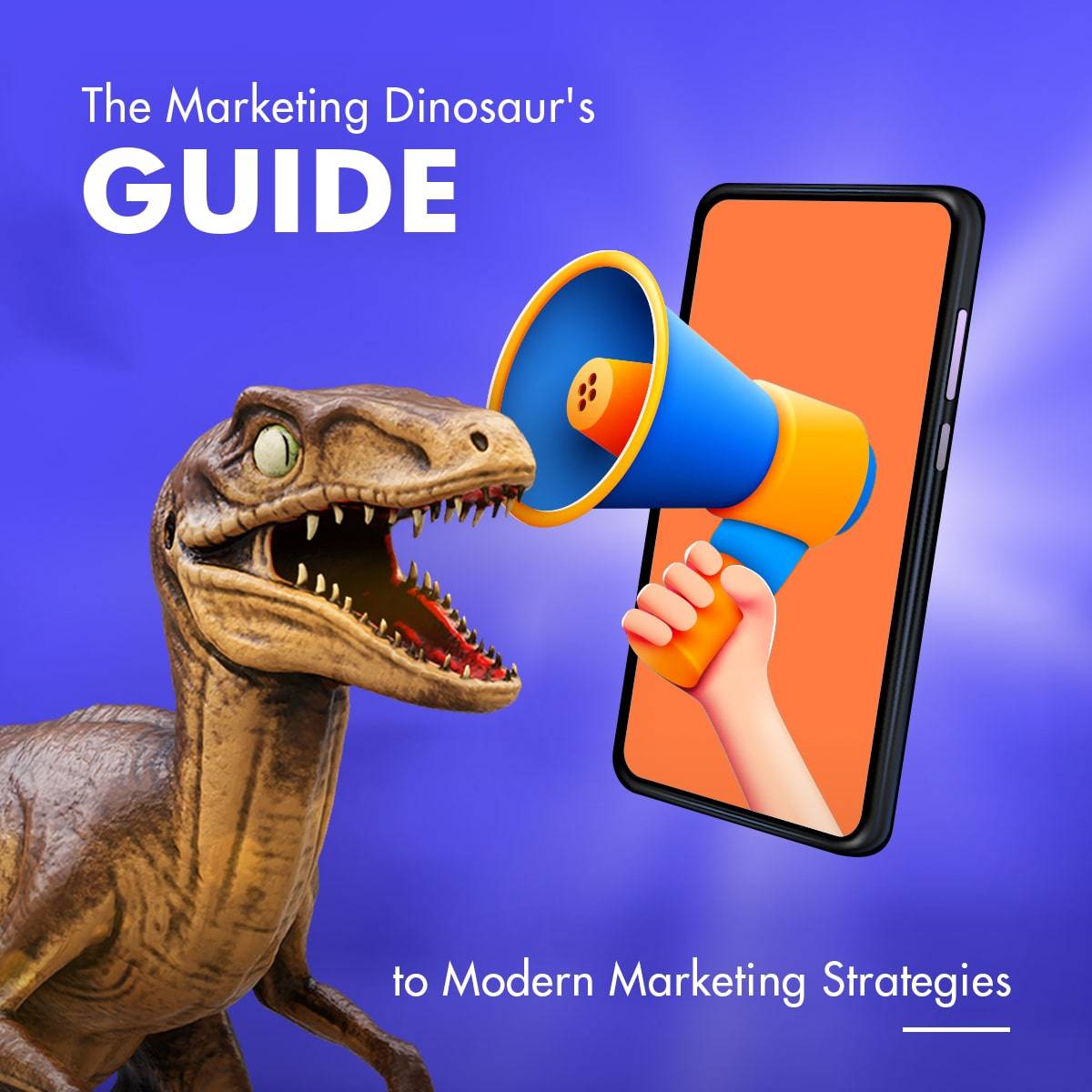
Marketing dinosaurs are those who have been in the business for a very long time and have experienced everything, from the heyday of print advertising to the emergence of digital marketing. Even though they are incredibly knowledgeable and experienced, they might be hesitant to adapt to new ideas and technologies.
Just like dinosaurs, they’re big, impressive, and can leave a big footprint; marketing dinosaurs can be spectacular and awe-inspiring, but they are also out of date and sometimes find it difficult to keep up with the fast-paced world of modern marketing. Although evidence that digital marketing strategies like search engine optimization are more successful at reaching consumers today, they may still rely on conventional marketing strategies like direct mail campaigns. It’s like they’re still trying to communicate with customers using smoke signals instead of a smartphone.
The Marketing Landscape
Over the past few years, there has been a substantial change in the marketing environment. This transition has been influenced by advances in technology, modifications in customer behavior, and the emergence of new marketing channels. As a result, businesses are faced with the challenge of adapting their marketing strategies to keep pace with the changing landscape. Let’s explore some of the key changes that have occurred in the marketing landscape and what they mean for businesses.
Digital Dominance
One of the biggest shifts in the marketing environment has been the rise of digital marketing. Businesses now rely on digital platforms like social media, email, and search engines to connect with their target market. Although still effective, traditional advertising channels like print, radio, and television are no longer the main ways for companies to reach their target audiences.
Compared to conventional marketing channels, digital marketing has a number of benefits. For instance, it is far more economical and enables companies to track and gauge the success of their efforts. Additionally, digital marketing makes it possible for companies to swiftly reach a worldwide audience, making it a crucial tool for companies trying to increase their reach.
Data-Driven Marketing
The accessibility of client data has completely changed how companies approach marketing. Businesses can obtain important insights into customer behavior, preferences, and interests by gathering and analyzing customer data. With this data, more specialized marketing strategies may be produced, each one catering to the unique requirements of a single customer.
Using data-driven marketing has also made it simpler for companies to assess the effectiveness of their advertising campaigns. Businesses can determine what is working and what needs to be improved by tracking important metrics like click-through rates, conversion rates, and engagement levels. Modern marketing now relies heavily on this data-driven strategy, and companies that don’t adopt it risk slipping behind their rivals.
Rise of Influencer Marketing
Another new development is the use of influencer marketing. This kind of marketing entails forming alliances with people that have sizable fan bases on websites like Instagram, YouTube, and TikTok. Then, these influencers receive payment to market goods or services to their fan base.
In order to attract younger audiences, influencer marketing has become a crucial strategy for organizations. While many Gen Z and millennial customers are wary of traditional advertising, they are more willing to believe endorsements from people they follow on social media. Influencer marketing has thus developed into a potent strategy for companies to connect with these audiences and spread brand awareness.
Focus on Customer Experience
The increasing emphasis on customer experience has caused another significant change in the marketing environment. Consumers of today want more from a brand interaction than just goods and services; they want a seamless, pleasurable experience.
Customers are more loyal to brands that put their needs first because they can stand out from the crowd and develop better bonds with them. By putting money into customer service, developing user-friendly interfaces, and offering individualized support, they are achieving this.
Emergence of AI and Automation
The marketing landscape is changing as a result of automation and artificial intelligence (AI). Businesses may streamline their marketing activities and develop more specialized campaigns by utilizing automation technologies and solutions driven by AI.
Automation software may automate monotonous processes like social media posting and email marketing, while artificial intelligence (AI) can be used to analyze client data and develop personalized messages. These resources and time-saving technologies help businesses increase the efficiency of their marketing initiatives.
5 Steps to Keep Your Business from Going Extinct in the Digital Age
In today’s digital age, businesses must adapt to keep up with the changing times. Here are some tips on how to keep your business from going extinct:
- Embrace Technology
Technology is a double-edged sword that can either make or break your company. Use technology to enhance your offerings to customers and the quality of your services. Look for creative methods to apply technology to your business, such as automating tasks, leveraging data analytics, or putting money into digital marketing.
- Know Your Customers
Businesses now find it simpler to comprehend the wants and preferences of their clients thanks to the digital era. Social media, online surveys, and customer feedback are used to learn more about what your customers desire and how they connect with your business. Use this data to enhance your goods and services, and provide a more specialized level of client service.
- Stay Relevant
By consistently advancing and upgrading your goods and services, you can keep up with market changes and outperform your rivals. To stay current and competitive, go to industry conferences, follow industry thought leaders, and keep up with emerging technology and procedures.
- Be Adaptable
Rapid change and upheaval are hallmarks of the digital era. Be prepared to change course and adapt to the shifting demands of your customers, the market, and new technology. To stay ahead of the curve, be flexible and open to trying new things and taking calculated risks.
- Build a Strong Brand
To remain relevant and draw in clients in the digital age, it is important to establish a strong brand. Spend money developing a brand that appeals to your target demographic and stands out in a congested marketplace. Provide a unified and memorable brand experience by distributing your business’s values and unique selling proposition consistently across all platforms.
Summary
To sum it up, the marketing landscape is constantly evolving, and brands must adapt to stay ahead of the curve. You must embrace technology, know your customers, stay relevant, be adaptable, and build a strong brand to survive and thrive in the digital age. By doing this, you can maintain your audience’s interest and continue to foster business expansion.
Ready to be on the leading edge and utilizing the latest digital marketing trends and strategies? Speak with us today.

Max Fisch is the founder of Vault Media.
